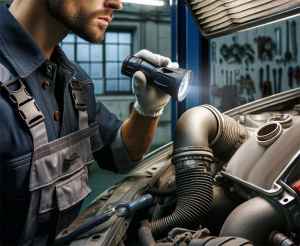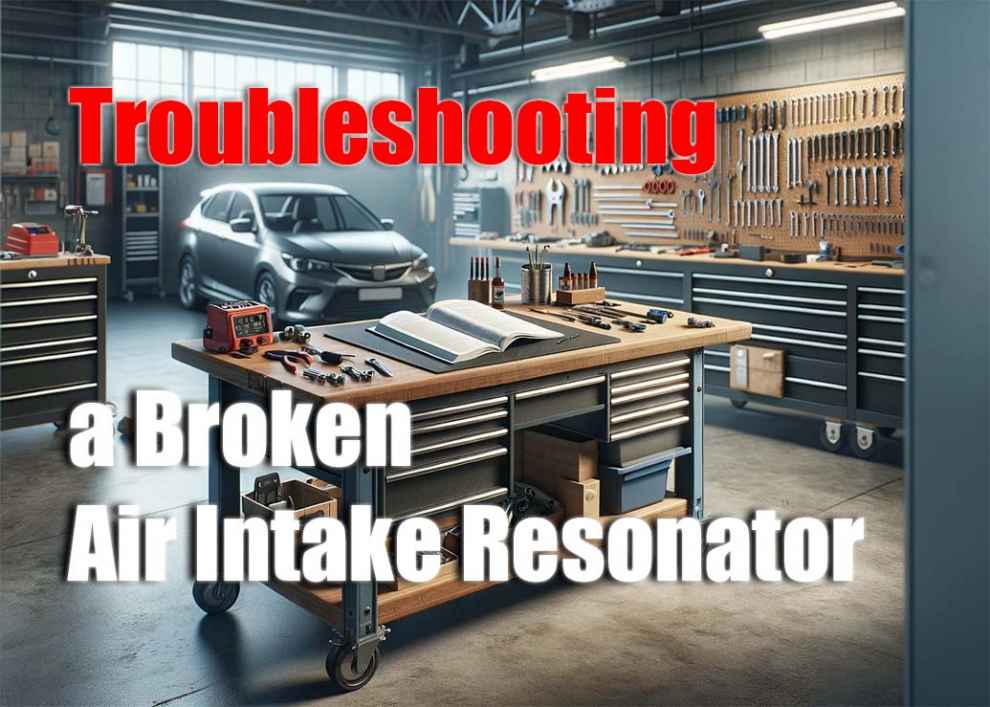The air intake resonator plays a critical role in your vehicle’s engine by moderating noise and managing the flow of air into the engine. Its primary function is to reduce the harsh sounds produced by the air intake process, making for a quieter ride. Additionally, it smooths out the air flow to the engine, which can enhance performance by allowing the engine to “breathe” more efficiently. This component’s efficiency in managing air flow directly impacts the engine’s performance and the vehicle’s fuel economy. When the resonator is damaged or malfunctioning, the engine can become noisier, perform less efficiently, and consume more fuel, underscoring the importance of this often-overlooked component.
Detecting a Broken Resonator: Key Symptoms
A malfunctioning or broken air intake resonator will often signal its condition through several clear symptoms. Vehicle owners should be vigilant for the following signs:
- Elevated Engine Noise: One of the most immediate signs is an increase in engine noise, particularly a growling or rumbling sound during acceleration, indicating the loss of the resonator’s noise-dampening function.
- Reduced Engine Performance: The engine might struggle to deliver its usual power output, making the vehicle feel sluggish, especially under load or during acceleration.
- Decrease in Fuel Efficiency: An inefficient air flow caused by a broken resonator can lead to poorer fuel economy as the engine compensates for the disrupted air intake.
- Visible Damage: In some cases, physical damage to the resonator such as cracks or disconnections can be observed, often resulting from impact or material degradation.
- Rough Engine Idle: The engine might idle unevenly or stutter due to the disrupted air flow, further indicating potential resonator issues.
Recognizing these symptoms early can prevent more significant engine problems down the line and save on repair costs.
Causes Leading to Resonator Damage
The air intake resonator can become damaged or fail for several reasons, each potentially leading to the problems outlined above. Common causes include:
- Wear and Tear: Like all automotive components, the resonator can degrade over time with regular use, leading to cracks, holes, or loose fittings.
- Impact Damage: Accidents or road debris can physically damage the resonator, compromising its integrity.
- Extreme Temperature Exposure: High underhood temperatures or severe environmental conditions can weaken the resonator’s materials, leading to failure.
- Improper Installation: If not correctly installed, the resonator can become loose or detached, affecting its performance.
The impact of a broken resonator extends beyond increased noise levels, affecting engine performance and fuel efficiency. Early detection and resolution of resonator issues are crucial in maintaining your vehicle’s health and operational efficiency.
In addressing air intake system maintenance, it’s also beneficial to consider enhancements like the Best Cold Air Intake for Jeep Wrangler and Gladiator to optimize engine performance. This upgrade is explored in greater detail in another of our articles.
Diagnostic Steps

Repair or Replacement?
Once a broken air intake resonator is confirmed, deciding between repair and replacement is the next step. In most cases, especially when the damage is severe, replacement is the best course of action. Repair might be an option for minor issues, but it’s often a temporary solution that doesn’t guarantee long-term reliability. When choosing a replacement resonator, it’s important to select a high-quality part that matches your vehicle’s specifications. Quality replacements ensure that the new resonator will last and keep your engine running smoothly without recurring issues.
Maintenance Tips
Regular maintenance plays a crucial role in preventing issues with the air intake resonator. Here are some steps to help maintain the health of your air intake system:
- Visual Inspections: Regularly check the resonator and surrounding air intake components for any signs of wear, damage, or loose connections.
- Air Filter Maintenance: Keep the air filter clean and replace it according to the manufacturer’s recommendations. A clean air filter ensures optimal air flow to the engine and can help extend the life of the resonator.
- Check for Leaks: Ensure all hoses and connections in the air intake system are secure and leak-free. Even small leaks can affect engine performance and may lead to resonator damage over time.
- Professional Check-ups: Consider having a professional mechanic inspect your vehicle’s air intake system during routine maintenance. They can spot issues that might not be obvious to the average vehicle owner.
Adhering to these maintenance practices can significantly reduce the risk of a broken air intake resonator and other related issues, ensuring your vehicle runs efficiently for longer.
Conclusion
A broken air intake resonator can significantly impact your vehicle’s performance. Early detection and appropriate action, typically replacement with a quality part, are essential for preventing further engine damage. Regular vehicle maintenance, including specific care of the air intake system, can prevent many common issues associated with the resonator. Implementing upgrades like a cold air intake system can also enhance engine performance, making such considerations worthwhile for vehicle owners looking to optimize their driving experience.

Add Comment